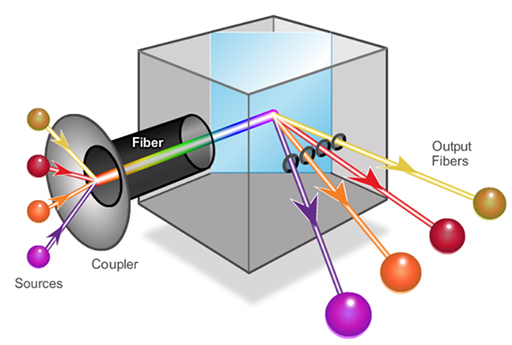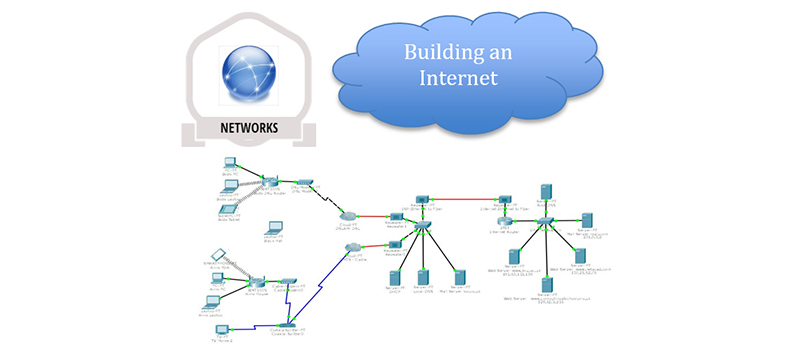4 Fibre optic
- Fibre optic transmission media consists of a glass core surrounded by a slightly less optically dense cladding material. Pulses of light, representing binary digits, are transmitted into the fibre using laser or LEDs and propagate along its length due to refraction at the core/cladding interface.
- Fibre optic provides extremely high data rates over great distances, and fibre optic cables are used to provide telecommunication links between continents using cables laid across the seabed. Because many WAN connections need high data rate links between service providers based in different countries, fibre optics are commonly used.
- As service providers need to use a common, standardised interface to exchange data, their fibre networks use either Synchronous Optical Networking (SONET) or Synchronous Digital Hierarchy (SDH) standards. These standards define how data is transferred over high data rate circuits stretching over thousands of kilometres.

Figure 7
- A newer fibre optic technique used for long distance communications is dense wavelength division multiplexing (DWDM), shown above. This allows a single fibre to support multiple channels (around 80, only 4 shown) by using different wavelengths (i.e colours) of light, with each channel supporting a data rate of 10 Gbps.
- DWDM fibre optic technology is now used in all the submarine cables laid between the continents.
- Some home users are also able to benefit from the high data rates available from fibre optic through a number of changes to the existing network. For example, fibre to the home (FTTH) is replacing the copper cabling that used to provide the ‘local loop’ connection between households and service providers, and offers data rates of approximately 1 Gbps. Another upgrade involves the use of fibre to the cabinet (FTTC), where fibre optic is run from the service provider to the local street cabinet, which is then connected to individual properties using copper cabling.
- Because FTTC still utilises copper, the data rate decreases as the distance between the cabinet and the household increases. By around 1500 m the data rate will have dropped to 15 Mbps in a fibre/DSL system. Cable FTTC uses coaxial cable to the home, which supports higher data rates of between 50–150 Mbps.
- Although both cable and DSL operators have started to offer FTTH/FTTC, it is expensive and time-consuming to roll out, so availability is currently limited.
